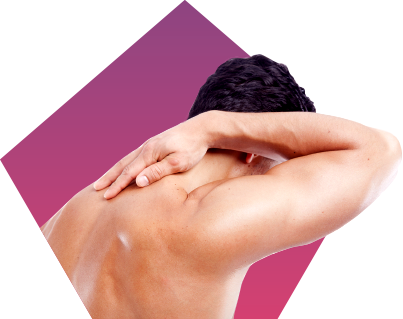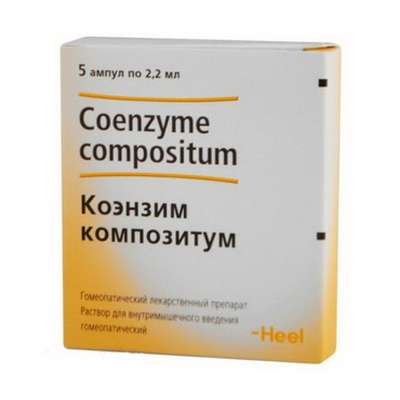11 May 2017
Synonyms: Intelectol
Active substance: Vinpocetine.
Vinpocetine (brand names: Cavinton, Intelectol; chemical name: ethyl apovincaminate) is a synthetic derivative of the vinca alkaloid vincamine (sometimes described as "a synthetic ethyl ester of apovincamine"), an extract from the lesser periwinkle plant.
Vinpocetine is not FDA approved in the United States for therapeutic use.
Vinpocetine has been reported to have cerebral blood-flow enhancing and neuroprotective effects, and has been used as a drug in Eastern Europe for the treatment of cerebrovascular disorders and age-related memory impairment. You can try Vinpotropile.
ATC - N06BX18 Vinpocetine.
Pharmacological group - Cerebrovascular correctors; Nootropics.
Nosological classification (ICD–10)
F01 Vascular dementia;
G25.9 Extrapyramidal and movement disorder, unspecified;
G45 Transient transient cerebral ischemic attacks [ attack ] and related syndromes;
G45.0 syndrome vertebrobasilar arterial system;
G46 Vascular syndromes of brain in cerebrovascular diseases;
G93.4 Encephalopathy, unspecified;
H31.1 Degeneration of choroidal;
H31.9 Disorders of choroid, unspecified;
H34 Retinal vascular occlusion;
H34.8 Other retinal vascular occlusion;
H35.3 Macular degeneration and posterior pole;
H35.8 Other specified retinal disorders;
H35.9 Retinal disease, unspecified;
H40.5 Glaucoma secondary to other eye diseases;
H57.9 Violation eye and adnexa, unspecified;
H81.0 Meniere’s Disease;
H83.3 Sound effects of the inner ear;
H91 Other hearing loss;
I64 Stroke, not specified as hemorrhage or infarction;
I67 Other cerebrovascular diseases;
I67.2 Cerebral atherosclerosis;
I67.9 Cerebrovascular disease, unspecified;
I69 Effects of cerebrovascular diseases;
I69.4 effects of a stroke, unspecified as hemorrhage or cerebral infarction;
R41.3.0 * Reduced memory;
R42 Dizziness and stability violation;
R47.0 Dysphasia and aphasia;
R48.2 Apraxia;
R51 Headache;
T90.5 Effects of intracranial injury.
Cavinton (Vinpocetine) Composition, structure and packing
Concentrate for solution for infusion is a colorless or slightly greenish, transparent.
1 ml 1 amp. 1 amp. 1 amp.
vinpocetine 5 mg 10 mg 25 mg 50 mg
Other ingredients: ascorbic acid, sodium bisulfite, tartaric acid, benzyl alcohol, sorbitol, water for injections.
Cavinton (Vinpocetine) Pharmacological action
The drug, which improves cerebral blood flow and cerebral metabolism.
Improves brain metabolism, increasing consumption of glucose and oxygen to the tissues of the brain. Increases the resistance of neurons to hypoxia; enhancing the transport of glucose to the brain through the BBB; takes the process of breakdown of glucose for energy more economical, aerobic way; selectively blocks Ca 2 +-dependent phosphodiesterase, increases the levels of adenosine monophosphate (AMP) and cyclic guanosine monophosphate (cGMP) brain Brain. Increases the concentration of ATP in the brain tissue, strengthens the exchange of norepinephrine and serotonin brain, stimulates the ascending branch of the noradrenergic system, has an antioxidant effect.
Reduces platelet aggregation and increased blood viscosity, increases the ability of red blood cells deform and blocks recycling erythrocytes adenosine; enhances oxygen release erythrocytes.
Enhances the neuroprotective effects of adenosine.
Increases cerebral blood flow, reduces the resistance of cerebral vessels without significant changes in indicators of the systemic circulation (blood pressure, cardiac output, heart rate, systemic vascular resistance).
No effect of “steal” increases blood circulation, especially in ischemic brain regions with low perfusion.
Cavinton (Vinpocetine) Pharmacokinetics
Distribution
Therapeutic plasma concentration - 10–20 ng/ml. When administered parenterally V d - 5.3 l/kg. Readily crosses the blood-tissue barriers (including the BBB).
Breeding
T 1/2 is 4.74–5 hours excreted through the kidneys and gastrointestinal tract in the ratio 3:2.
Cavinton (Vinpocetine)Dosage
The drug is intended for in/drip infusion. Introducing slow infusion rate should not exceed 80 drops/min.
Can not be entered in the/m and/in without dilution.
To prepare the infusion can use saline solution or solutions containing dextrose (Salsol, Ringer Rindeks, Reomakrodeks). Infusion solution should be used with Cavintonum the first 3 hours after cooking.
The usual initial daily dose is 20–25 mg per 500 ml infusion solution. Depending on tolerability, within 2–3 days the dose can be increased to not less than 1 mg/kg/day. Average duration of treatment 10–14 days.
The average daily dose for body weight 70 kg - 50 mg (500 ml infusion solution).
Liver and kidney dose adjustment is required.
Upon graduation in/therapy is recommended to continue treatment pills Cavinton Forte (1 tab. 3 times/day) or Cavinton (2 tabs. 3 times/day).
Cavinton (Vinpocetine) Overdose
Currently, data on drug overdose Cavinton limited.
Treatment: gastric lavage, activated charcoal, symptomatic therapy.
Cavinton (Vinpocetine) Drug Interactions
With simultaneous application interaction is observed with beta-blockers (hloranolol, pindolol) clopamide, glibenclamide, digoxin, hydrochlorothiazide, or acenocoumarol.
In rare cases, the simultaneous use of alpha-methyldopa is accompanied by some increased hypotensive effect when applying a combination of a regular monitoring of blood pressure.
Despite the lack of evidence supporting the possibility of interaction, caution is advised with concomitant administration with medications central action and antiarrhythmic drugs.
Pharmaceutical interactions
Concentrate for solution for infusion and heparin chemically incompatible, therefore prohibited their introduction into a fluid mixture, but you can simultaneously perform anticoagulation and vinpocetine.
Concentrate for solution for infusion is incompatible with infusion solutions containing amino acids, so they can not be used for breeding Cavinton
Cavinton (Vinpocetine) at Pregnancy and lactation
The drug is contraindicated during pregnancy and lactation.
Cavinton (Vinpocetine) Side effects
Adverse events during treatment with the drug were detected rarely.
Cardio-vascular system: ECG changes (depression ST, prolongation of the interval QT), tachycardia, arrythmia (a causal relationship to drug intake is not proved, because in a natural population of these symptoms occur with the same frequency) change in blood pressure (usually decrease), redness of the skin, phlebitis.
CNS: sleep disorders (insomnia, hypersomnia), dizziness, headache, general weakness (these symptoms may be manifestations of the underlying disease).
From the digestive system: dry mouth, nausea, heartburn.
Other: allergic skin reactions, increased sweating.
Cavinton (Vinpocetine) Indications
Reduction of neurological and psychiatric symptoms in various forms of circulatory failure, brain (ischemic stroke, hemorrhagic stroke recovery stage, the effects of a stroke, transient ischemic attack, vascular dementia, vertebrobasilar insufficiency, cerebral atherosclerosis, hypertensive encephalopathy and traumatic);
Chronic disease of the choroid and retina (eg, thrombosis/occlusion/central retinal artery or vein);
For the treatment of hearing loss perceptive type, Meniere’s disease, idiopathic tinnitus.
Cavinton (Vinpocetine) Contraindications
The acute phase of hemorrhagic stroke;
A severe form of coronary artery disease;
Severe arrhythmias;
Pregnancy;
Lactation;
Age 18 years (due to lack of data);
Known hypersensitivity to vinpocetine.
Cavinton (Vinpocetine) Cautions
Presence of a syndrome of prolonged QT interval and administration of drugs causing prolongation of the interval QT, requires periodic monitoring of ECG.
Cavinton infusion solution contains sorbitol (160 mg/2 mL), and therefore the presence of diabetes necessary to periodically monitor the level of glucose in the blood.
In the case of fructose intolerance or deficiency of fructose 1,6-di-Phosphatase vinpocetine should be avoided.
Effects on ability to drive vehicles and management mechanisms
Data on the effect of vinpocetine on the ability to drive a car and operating mechanisms not.
Cavinton (Vinpocetine) Reviews
Anrew, 37 years,Vinpocetine has been prescribed by a doctor to my grandfather with piracetam to improve blood circulation in the brain. The drug works only, it dilates blood vessels and capillaries in those places where the brain lacks new oxygenated blood. And my grandfather when applying medication did not notice any change in heart function and blood pressure. Also worth noting is that this medicine protects against nerve cell death and permanent increases their power. Basically it is administered after a stroke, atherosclerosis, lesions or disturbances in the brain.
Also, it should be avoided to use pregnant, baby, breastfeeding, with heart disease and so on. D. Read instructions carefully. Also worth noting is that this drug should not be used with heparin, as there is a risk of severe bleeding. And I want to note that the older a person uses Vinpocetine, the more carefully should be watching him from the attending physician. At least grandfather grandmother watched carefully, as he wrote in his review about Ketoprofen is our nurse.
Grandfather status improved, his head began to ache less, adverse reactions we have not noticed, even though he had insomnia, but it's likely effect of piracetam!
As a result, I can say that a drug like vinpocetine, used together with piracetam!
Steven, 46 years, Vinpocetine refers to the psychoactive and neuroprotective drugs. I saved them with a small increase in pressure of 130-140, when weather changes when the pressure on the brain, or tormented migraine. Even at a pressure of 120/75, and when the pressure on the brain too drink. At lower pressures, I do not drink, and then the pressure falls very much. Just half an hour after the application ceases to press on the brain, and I feel like they improve blood circulation, and before that was the impression that the brains screw up.
Initially, I attributed this drug neurologist, when I have the pressure was increased and this drove the jaw and occasionally twitching eye rate of 1 tablet 3 times a day. From this he also shits as improves cerebral blood flow.
I rescue them at low pressure and weather changes.

 Cart
Cart




